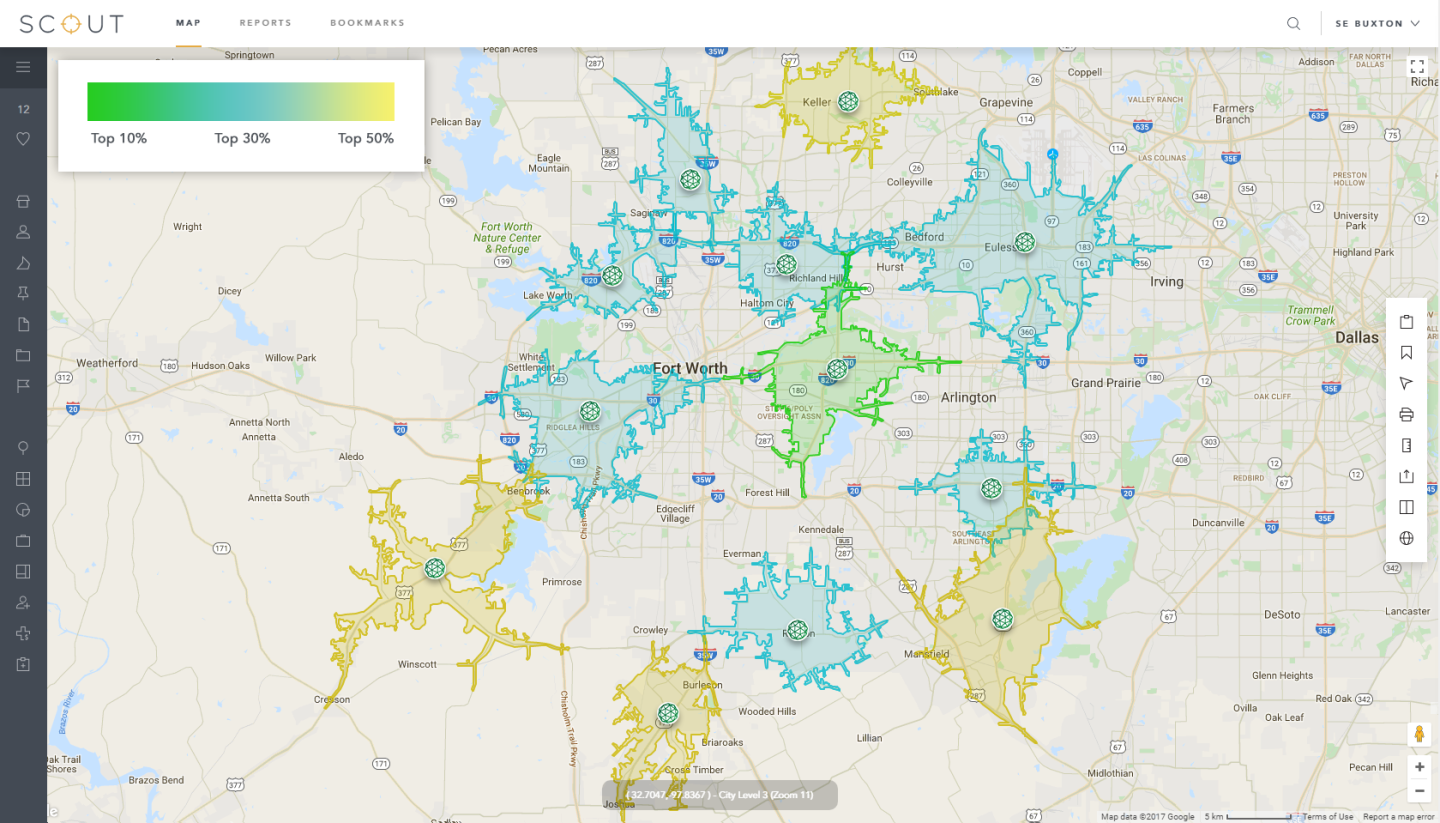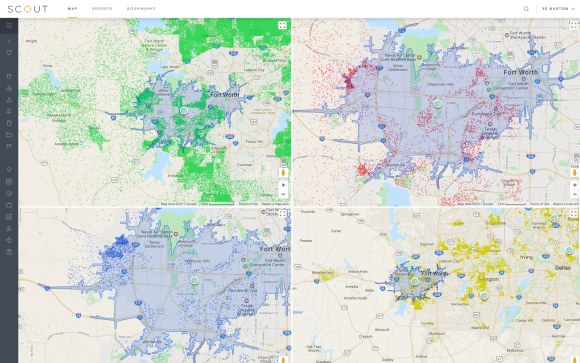It’s franchise sales 101: if you want to sell franchise territories, you have to define where those territories are going to be placed.
In the early days of a franchise’s evolution, the process may seem relatively easy. With plenty of untapped markets, you can quickly identify an available area and sell the rights. But as your franchise expansion kicks into full gear, that approach can lead to chaos. It’s important to establish a clear franchise territory optimization plan to ensure that you are respecting protected areas while maximizing each market's development potential.
If it’s time for your franchise organization to take franchise territory mapping and management to the next level, here are three tips to guide the process.
1. Decide How to Define Franchise Territories
This step may seem obvious, but as a franchise system grows it's not uncommon for its territory definitions to change. Territories can be defined using simple metrics such as mileage radius rings, ZIP codes, population size, road boundaries, or some combination of metrics. If you want to take it a step further or update your existing territory criteria, you can work with a market research firm to study the performance of your existing territories and define new criteria to guide future territory definitions.
2. Identify Future Territory Opportunities
Once you’ve established your franchise territory criteria, you need to identify where future territories can be placed – a critical step in the franchise sales process. If you are using simple metrics such as ZIP codes, you could do this process manually using a mapping platform. If you are using more complex definitions or don’t have the internal resources to go through a lengthy manual process, consider leveraging a consultant to conduct a territory optimization analysis.
3. Map and Manage Franchise Territories
With your list of current and future territories in place, it’s time to map them. There are a variety of mapping platforms available that can be used to support this process. Look for platforms that allow you to mark territories that are protected and territories that are currently available to avoid a mistake in the sales process. Some platforms also allow you to visualize data or run reports based on your territories to further support franchise sales efforts.
The Bottom Line
Success in selling a franchise begins with the basics. By investing the time to map your current and potential franchise territories, you can improve the efficiency of your franchise sales process and ultimately reach your franchise growth goals.
Looking for more tips about franchise territory optimization? Check out our blog, "Territory Optimization: A Game-Changer for Growing Franchises."


